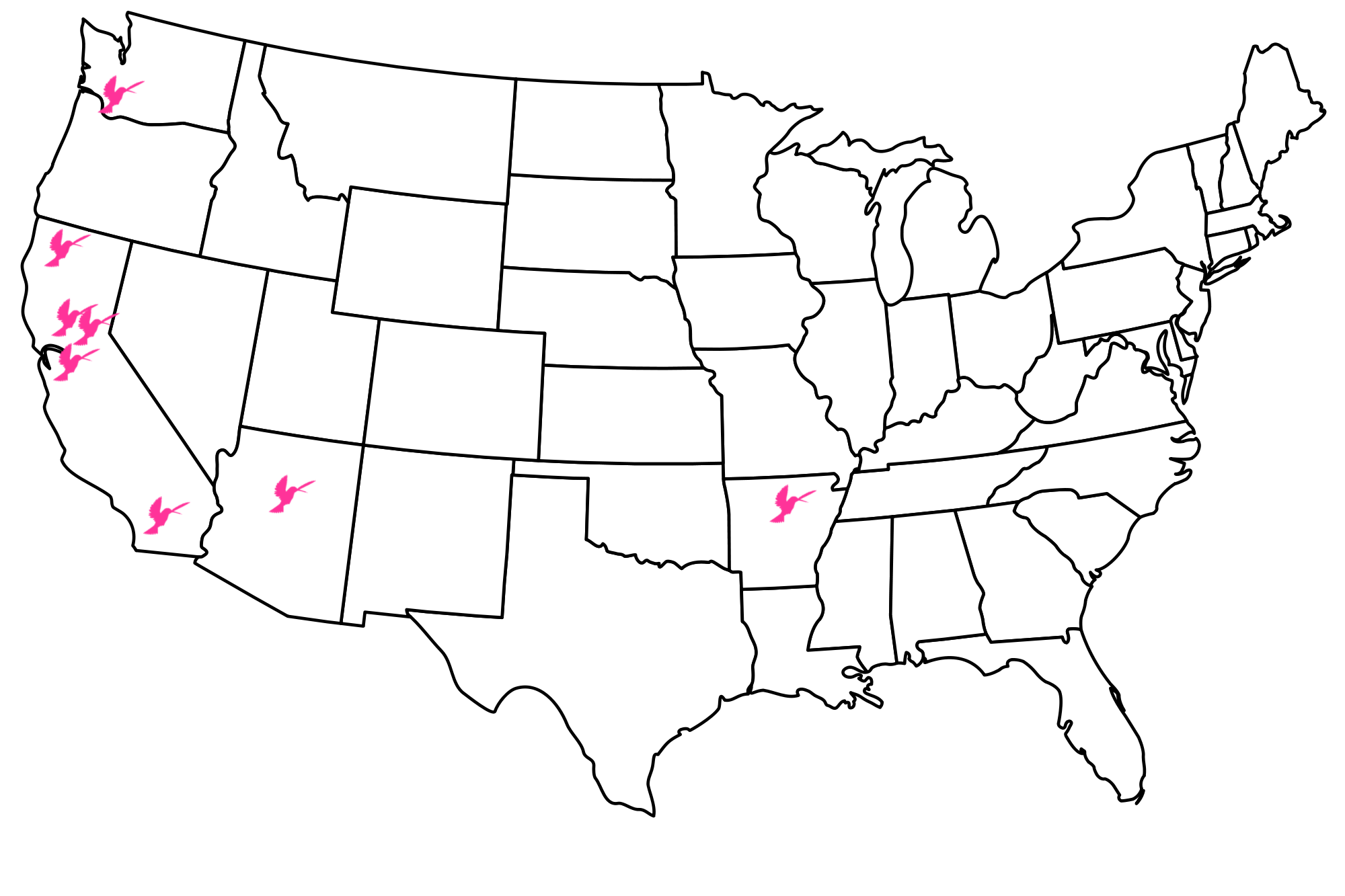What’s Amazing About Hummingbirds?
Hummer's Galore is not only a business but a passionate place that is dedicated to creating innovative hummingbird products. Let's look at some interesting facts about these fascinating birds.


Why Do Hummingbirds Fight?
Hummingbirds like their own territory and will be aggressive to other hummingbirds to keep them away from the feeder. They feed on the nectar to survive and fight to keep other hummingbirds away from their source. While more feeding stations help, having clusters of feeders away from each other seems to work best.
Do Hummingbirds Mate for Life?
No. After mating, the male hummer takes off to mate with other females. The female builds a nest in a thickly secluded bush or tree out of moss, lichen, plant down, and seeds and holds the nest together by silk fibers from spiders. The top of the small nest is the size of a quarter. She mostly lays two eggs, but sometimes the number could go up to four.


How Long Do Hummingbird Eggs Take to Hatch?
In most cases, it takes 16 to 18 days. In cooler weather, it may take 21 days. Since eggs are sometimes laid a day or so apart, they can hatch at different times and are the size of a small jellybean.
When Does a Hummingbird Take Flight?
Some fledglings start to leave the nest around 21 days after they hatch. When they develop the ability to fly, their speed can range from 25 to 30 mph. A hummingbird can flap its wings up to 200 times a second.
Can Hummingbirds Fly Backwards?
Hummingbirds are the only birds that can fly backward. Hummers can fly up, down, hover, fly sideways and backwards; have the fastest wing beats; for some, it is 90 beats per second. Watching the hummers in flight and fight is a sight to behold. It is truly an aerial show.



Migration
What hummingbirds should I expect in my yard? And When?

Anna’s”: Southwest and West: AZ, NM, Texas
Anna’s are year-round residents and are the earliest breeders, sometimes late December, so nectar available at all months is a plus as flowers are not readily available. Its iridescence rose color head and throat distinguishes it from the Costa which has a purple iridescence color.

Rufous: Eastern to Northern CA, OR, WA, ID and MT and southern AK.
The Rufous hummingbird is the most northern hummingbird and the only hummingbird that regularly occurs in Alaska. Look for these hummers February and leave in October. To distinguish male Rufous and Allen’s, look at their back. The back of the Allen’s is all green.

Black-Chinned Hummingbird: Western States from TX to WA.
The Black-Chinned Hummingbird has the most extensive breeding range of any of the western hummers. Some migrate to Central Mexico, but others stay in Coastal Texas. If they migrate out of your area, look for them to appear in March and stay sometimes into November. Besides habitats in the wild, these hummingbirds also like suburban areas that have feeders and nectar-rich flowers.

Costa: Most Prevalent in Southern states of CA, AZ, NV, NM.
The Costa could be called the desert hummingbird out of the seven species breeding the west as it prefers the driest climates and environments. These are year-round residents so keep your feeders filled.

Ruby-Throated Hummingbird: Eastern half of the US.
Only this one species lives throughout the eastern half of the US although some western hummingbirds may be found in the east, especially in the late fall. Be sure to have your feeders out early February to have them stop at your feeder. Flowers are not as abundant at this early time, so it is important to be ready. Some stay as late as the end of October, so do not stop feeding as they need nourishment. They fly 500 miles nonstop across the Gulf of Mexico on their migration south. Before starting, they increase their body weight by 50 percent storing energy as fat to burn while crossing.